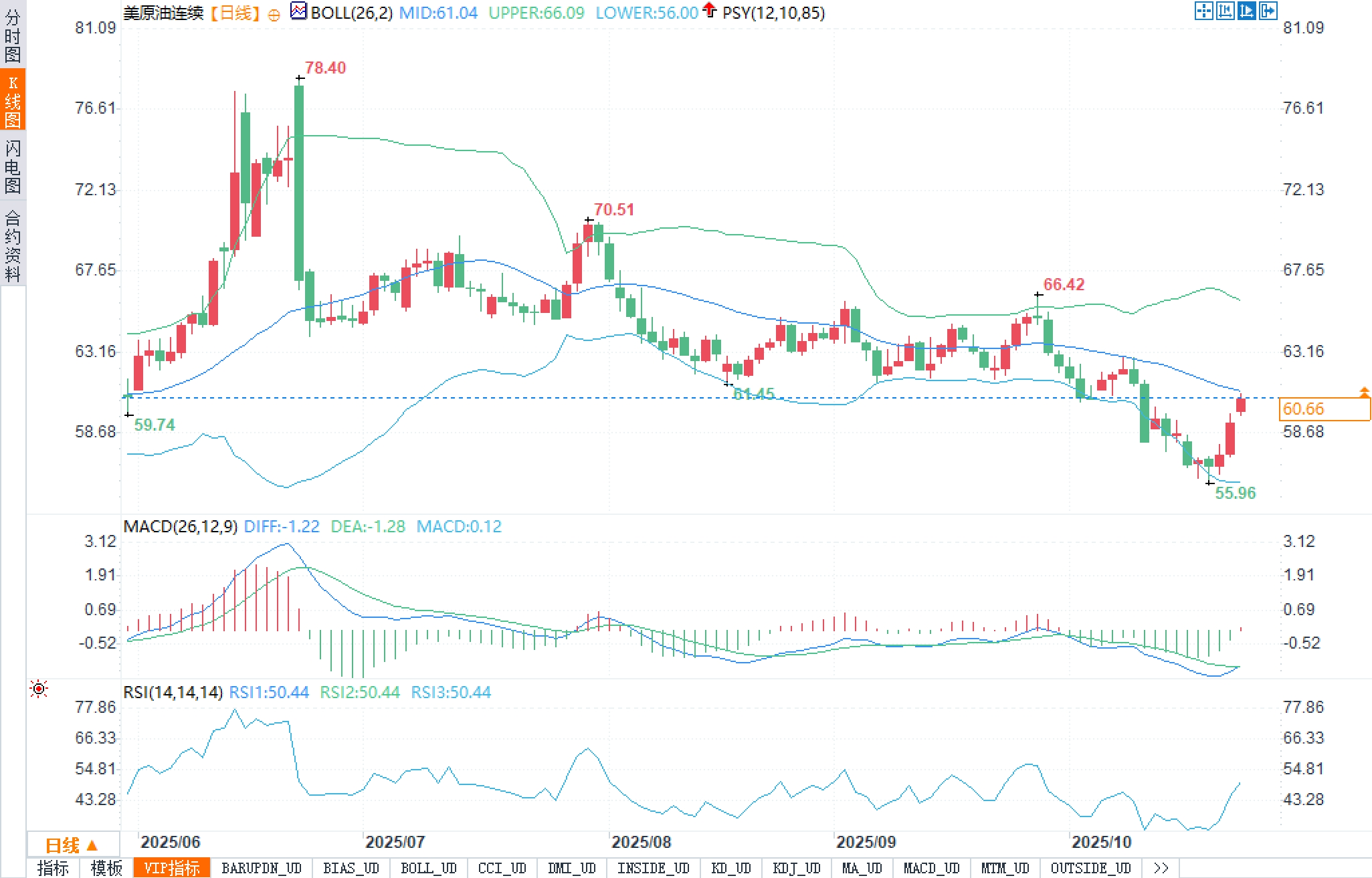Tightening restrictions, a strong dollar: Who controls crude oil?
2025-10-23 16:54:19

Meanwhile, the US dollar index hovered around 99.00, equity markets showed divergent performance, and the US government shutdown entered its 23rd day/fourth week, forcing the delay of key economic data releases. Markets are betting on a 25 basis point interest rate cut by the Federal Reserve on October 29th, with another cut in December. Derivatives pricing suggests a 97% probability of an October rate cut and a 96% probability of a December rate cut. Amidst the dilemma of tightening supply and shifting financial conditions, oil prices are experiencing a period of upward movement.
Fundamentals
Sanctions are the most direct catalyst for this rebound. The deep restrictions on Lukoil and Rosneft not only restrict settlement and financing channels but also increase compliance costs for shipping, insurance, and intermediary services, effectively increasing the difficulty and price of Russian barrels arriving at the port. More importantly, coordinated action is widely encouraged at the implementation level, and related statements have been extended multilaterally. The actual effect will be reflected in increased friction and widening discounts in alternative flows. This supply-side "tightening" has effectively alleviated the previous "oversupply" narrative in the short term, providing direct support to the near-term end of the curve.
But this isn't a one-line story. Oil-producing countries are generally still increasing production, while weak growth momentum in major economies and heightened cross-border policy uncertainty are compromising demand resilience. In other words, a "hard contraction" on the supply side is offset by "soft hesitation" on the demand side. Regarding financial conditions, the statistical gap created by the government shutdown has made it more difficult for the Federal Reserve to rely on data. Markets are betting on two rate cuts to hedge against growth risks, potentially weakening the dollar's medium-term strength. However, until this happens, the US dollar index, around 99.00, remains a nominal resistance for dollar-denominated commodities.
At the geopolitical level, the degree of cooperation and implementation details determine the "penetration" of sanctions. If the compliance network continues to tighten, the actual amount of Russian crude oil available for circulation will continue to decline. If circumvention paths or exemption windows emerge, the supply gap will be partially filled. This uncertainty is one of the reasons for the wide fluctuations in oil prices in recent days.
Technical aspects:
From the daily chart, the Bollinger Bands parameters BOLL(26,2) show: middle band 61.04, upper band 66.09, and lower band 56.00. The price formed double support with the lower Bollinger Band near the low of 55.96 and then rebounded to approach the middle band 61.04.
The DIFF of MACD (26, 12, 9) is -1.22, and the DEA is -1.28. The histogram 0.12 has turned from negative to positive, a typical "technical rebound start" signal. However, it is below the zero axis, indicating that the medium-term trend is still weak and the trend reversal has not yet been confirmed. The RSI (14) is approximately 50.44, returning from the oversold zone to near the midline. The momentum is neutral to bullish but not overheated.

Upward resistance lies at the 63-day moving average, followed by 66.09 (the upper Bollinger Band), and 66.42 (the previous high). A break above 66.42 on strong volume would trigger a retest towards 70, with the next support level at 78.40. Downward support is at the 59.74 and 58.68 levels. A break below this level would trigger a retest back to the 56.00/55.96 range. If this level breaks, the rebound would be characterized as a pullback rather than a V-shaped reversal.
——Conclusion: The resonance of indicators points to "the rebound continues, but the level is limited, and it is necessary to break through the two thresholds of 63 and 66.09 before talking about reversal."
Market Outlook
Short-term (1-2 weeks)
Bullish path: The implementation of sanctions continues to ferment, the spot discount widens, and after 61.04 is effectively stabilized, the price will attack 66.09/66.42; if the positive value of the MACD histogram continues to expand and the RSI breaks through the 55-60 range, the volume breakthrough will push the target to the historical dense area near 70.
Short-selling path: If compliance execution fails to meet expectations, or the US dollar index continues to be strong, oil prices will encounter resistance and fall back between the middle and upper tracks, falling back to 59.74/58.68. The nature of the rebound will be downgraded to mean reversion; further loss of 56.00/55.96 will technically trigger the confirmation of "continuation of the downward trend", and the subsequent rhythm may evolve into a retracement to the lower edge of the box - a weak pullback - and then a downward test.
Midline (January-March)
The tug-of-war between supply tightening and macroeconomic slowdown will not disappear quickly:
1) If sanctions cause the available supply of Russian barrels to continue to shrink, and the Federal Reserve cuts interest rates twice as expected, the nominal boost from the weakening dollar will resonate with supply constraints - the curve may "lift and shift" from the near end to the far end, and the price range is expected to rise to 66.09-70; but if the demand side does not improve at the same time, this upward trend will be more like a step-by-step push rather than a unilateral one.
2) On the contrary, if there are avoidance paths at the execution level and incremental hedging in other production areas, coupled with continued weak global growth, oil prices will be easily affected by the "high-level pullback + re-test of the lower track", and the mid-line range will return to 55.96-60.
Between the two scenarios, the key observation variables are: the penetration rate of sanctions, the elasticity change of refined oil cracking spreads, whether the US dollar index falls from 99, and when the macro data window is filled.
- Risk Warning and Disclaimer
- The market involves risk, and trading may not be suitable for all investors. This article is for reference only and does not constitute personal investment advice, nor does it take into account certain users’ specific investment objectives, financial situation, or other needs. Any investment decisions made based on this information are at your own risk.





















